By: Tonya Smith
Tom Wilkinson’s acting helped save my marriage.
This seems like a bold claim, but when my wife came out as transgender, I turned to my memories of watching his performance in Normal when I was in college. I didn’t have much experience with the transgender community in real life, and that movie provided the framework for what I might expect and how I could be a compassionate, supportive partner. Seeing another family like ours onscreen gave me hope that things could work out. As I searched for more stories like ours, I came up wanting. I came across a version of the Bechdel test adapted by GLAAD, and wanted to use it to see if well-written LGBT characters were as rare as they seemed.
If you conducted a poll about whether there is enough positive LGBT exposure in the media, you’d bound to get conflicting answers. Though media depiction of LGBT characters may seem relatively recent, the earliest noteworthy portrayal of homosexuality on film was in the 1895 William Kennedy Dickson film The Dickson Experimental Sound Film. But while LGBT characters have been present on camera for quite some time, that presence has often been limited and stereotyped.
Why is this so important? LGBT acceptance in society and politics has made some huge strides lately, and I suspect this is in part due to increasingly beneficial media exposure. Media exposure greatly affects the way society at large views the LGBT community; a well-written and nuanced LGBT character can help to humanize a group of people that the viewer may not have interacted with in their everyday life. Good representation changes minds and hearts. So has the media done a better job of representing LGBT people in a realistic way?
The questions
Long-term, there are a bunch of questions that this project is going to seek to tackle. Is media changing with public attitude, is public attitude changing with the media, or does the answer lie somewhere in between? What can we do to empower more positive representations of LGBT people in the media?
For this pilot study, though, let’s focus on:
- What does a positive representation even look like?
- Can we quantify that representation through the magic of computational linguistics?
Why those? Because they’re an easy starting point.
The short-short version
Of the ten movies I chose, seven passed. However, this was a highly non-random sample of movies; each was chosen on the basis of having an LGBT character present, so they already met some of the criteria. My list fared quite a bit better than last years’ movies (taken as a whole), so it’s clear that we need to see more nuanced LGBT characters represented in film.
There’s still quite a bit to be learned from analyzing the cinematic pantheon, and natural language processing (NLP) can provide valuable assistance, but it’s not quite up to the task on it’s own. For now at least, it still takes a human eye to analyze a film and decide whether or not LGBT characters are represented in realistic and inclusive ways.
Methodology
To address the question of positive representation, I turned to the Vito Russo Test, named after film historian and GLAAD co-founder Vito Russo. The criteria were inspired by the Bechdel test, which examines the portrayal of women on film. In order to pass, a film has to meet the following criteria:
- The film contains a character that is identifiably lesbian, gay, bisexual, and/or transgender (LGBT).
- That character must not be solely or predominantly defined by their sexual orientation or gender identity (i.e. the character is made up of the same sort of unique character traits commonly used to differentiate straight characters from one another).
- The LGBT character must be tied into the plot in such a way that their removal would have a significant effect. Meaning they are not there to simply provide colorful commentary, paint urban authenticity, or (perhaps most commonly) set up a punchline; the character should matter.
To start with, I chose ten movies from Wikpedia’s List of LGBT characters in film, and stuck with movies I’d seen before. I rated films as either passing or failing on the basis of having at least one character that passes the test, and additionally rated it on a 1-3 scale of how many criteria it meets.
In order to get a more balanced look at how nuanced and realistic the portrayals were, I took it a step further and added a criterion: How tropey is the character? Because tvtropes is either the best or the worst thing on the Internet, I’ve used their Queer as Tropes list to further evaluate characters for realism and depth. If a character hit more than two of these tropes, the movie fails.
To address the technology question, I’ve analyzed each of the films’ scripts using a python script running the Natural Language Toolkit to see if any interesting patterns in language emerged.
Question 1 – What does a positive LGBT character look like?
| Chasing Amy | ||||
|---|---|---|---|---|
| LGBT character? | Defined by LGBT id? | Plot-critical? | Tropes used | Score (1-3) |
| Yes (2) | No | Yes | Dude, she’s a lesbian | 3 |
Notes:
One of Kevin Smith’s more sentimental movies features two LGBT characters: Alyssa Jones and Hooper X. Alyssa is the character at the center of the film, and though her bisexuality is used as a teaching point for two of the other main characters, it’s done in a way that is never preachy or heavy handed. Holden in particular grows and matures as a result of his time with her. The movie also does a great job of showing the negative stereotypes that bisexual people have to combat, but particularly the LGBT community’s sometimes frosty attitude towards bisexuality. You can almost feel the temperature in the room drop a couple degrees during the pronoun game scene. Hooper provides context to the straight characters for the LGBT world they aren’t familiar with. While the gay character as a queer cultural guide does border on stereotypical, it doesn’t come off that way. He plays Holden’s conscious, helping him come to grips with something he doesn’t quite understand so he can shed his fear and grow. I also award imaginary bonus inclusion points for the use of a female character, bisexual representation, and a character of color, all of which are portrayals sorely lacking in mainstream releases.
Final Verdict: Pass
| Let’s Go to Prison | ||||
|---|---|---|---|---|
| LGBT character? | Defined by LGBT id? | Plot-critical? | Tropes used | Score (1-3) |
| Yes | No | Yes | None. | 3 |
Notes:
I’ve seen this movie more times than I can count, but Barry was still a surprise. While homosexual coupling behind bars is an obvious trope (interestingly, a prison relationship between two men isn’t a listed trope on Queer as Tropes), Barry seems to be gay regardless of his time behind bars. It’s not just about sex to him at all (although that is clearly the goal), he takes the time to woo the object of his affection, and they develop a surprisingly tender and affectionate relationship with one another besides the obvious play for comedy.
Final Verdict: Pass
| My Best Friend’s Wedding | ||||
|---|---|---|---|---|
| LGBT character? | Defined by LGBT id? | Plot-critical? | Tropes used | Score (1-3) |
| Yes | Yes | No | Flying under the gaydar | 1 |
Notes:
George Downes is the quintessential “gay best friend”. He is classy and polished, and exists only as a foil for the main character. He plays it straight when she tries to use him to make her love interest jealous. His function is to make the heinous main character more likable, and to conveniently show up as a plot device at the end so “America’s Sweetheart” didn’t end up alone.
Final Verdict: Fail
| Austin Powers: The Spy Who Shagged Me | ||||
|---|---|---|---|---|
| LGBT character? | Defined by LGBT id? | Plot-critical? | Tropes used | Score (1-3) |
| Yes (2) | Yes | No | Butch lesbian, Lesbian jock | 1 |
Notes:
Making Frau bisexual is a weak joke at best. Unibrau is a poor two note joke if we’re being generous. It seems like she was shoe-horned in just for the lame ass joke on her name. Not sure why she had to be Frau’s lover, other than maybe to lamely reinforce Frau’s statement in the past that she “will never love another man”. Representation matters, and reducing an entire identity to a stereotype is dehumanizing. Then again, that’s pretty much the basis for all of the humor and all of the characters in the Austin Powers movies, so I’m not sure what else I expected.
Final Verdict: Epic Fail
| The Silence of the Lambs | ||||
|---|---|---|---|---|
| LGBT character? | Defined by LGBT id? | Plot-critical? | Tropes used | Score (1-3) |
| Yes | Yes | Yes | Yes, though not listed on TV Tropes. | 2 |
Notes:
I’m not the first person to criticize this movie for it’s homophobic and transphobic representation, but I don’t think it can be said enough. Representation matters, and this is a shitty representation. James Gumb (better known as Buffalo Bill), is problematic in many ways. First of all, Buffalo Bill tends to be misconstrued as gay, but fits a transgender role more closely. The character leads to negative and fearful stereotyping of both effeminate gay men and transgender women. The fact that the character is a psychotic killer (with gender identity issues seemingly driving their psychosis) perpetuates fear and misunderstanding of transgender people. The current bathroom argument goes to show that transgender people are often mistakenly viewed as predatory, mentally ill or both. That’s due in large part to representations like this, particularly when many people don’t personally know someone who is transgender.
Final Verdict: Fail
| The Boondock Saints | ||||
|---|---|---|---|---|
| LGBT character? | Defined by LGBT id? | Plot-critical? | Tropes used | Score (1-3) |
| Yes | No | Yes | Armoured closet gay | 3 |
Notes:
Paul Smecker is a classic closeted, self-hating gay man, but it makes some sense given the nature of his career and given the fact that he seems to loathe everyone. He treats everyone around him with condescension, and his own sexuality is apparently no exception.
Final Verdict: Pass
| The Royal Tenenbaums | ||||
|---|---|---|---|---|
| LGBT character? | Defined by LGBT id? | Plot-critical? | Tropes used | Score (1-3) |
| Yes | No | Yes | Bi the way | 3 |
Notes:
Margot is a fascinating and multifaceted character, and her bisexuality is merely one of those facets. It’s mentioned in passing, and doesn’t contribute to her character development. On the one hand, it’s great that it doesn’t define her and isn’t her reason for existence, but it seems to have been thrown in to emphasize her more rebellious side.
Final Verdict: Pass
| I Love You Phillip Morris | ||||
|---|---|---|---|---|
| LGBT character? | Defined by LGBT id? | Plot-critical? | Tropes used | Score (1-3) |
| Yes (2) | No | Yes | Coming out story | 3 |
Notes:
Based on a true story of a real life con man, this movie tells the tale of a man who comes out of the closet after brush with death. Once a law-abiding, upright police officer, Steven Russell turns to a life of crime to finance his new boyfriend’s upscale tastes. He eventually gets caught, and meets the love of his life in prison. This movie is ripe for full-fledged trope indulgence, but never goes there.
Final Verdict: Pass
| The Best Exotic Marigold Hotel | ||||
|---|---|---|---|---|
| LGBT character? | Defined by LGBT id? | Plot-critical? | Tropes used | Score (1-3) |
| Yes | No | Yes | But not too gay | 3 |
Notes:
This is not Tom Wilkinson’s first turn as an LGBT character. (Normal was the first movie I saw with Tom Wilkinson as an LGBT character, and remains one of the most accurate depictions of transitioning I’ve seen. If you haven’t seen it, find it. It is definitely worth watching). In The Best Exotic Marigold Hotel, Wilkinson plays a gay man named Graham who was raised in India, and has come back after retiring. He met his first love in India, and is trying to gathering the courage to find him again. It’s a beautiful, heart wrenching story within the movie.
Final Verdict: Pass
| Saved! | ||||
|---|---|---|---|---|
| LGBT character? | Defined by LGBT id? | Plot-critical? | Tropes used | Score (1-3) |
| Yes | No | Yes | Coming out story | 3 |
Notes:
Having gone to a school very much like the main character’s school, I can attest to the accuracy of the behavior towards Dean and Mary. All of the characters are complex and realistic, and I love that it doesn’t paint anyone with a wide brush. Even the characters you’d think would never be accepting are willing to confront their beliefs and challenge their notions of what they thought was true when presented with the choice of accepting someone they love as they are.
Final Verdict: Pass
Question 2 – What can we learn using technology?
I used natural language processing (NLP) to analyze the scripts of each of the movies I put through the test, and what I found is that at this time the Vito Russo Test basically can’t be automated.
Why? Keywords are few and far between. Of the ten films I analyzed, only half actually used the word “gay”. One out the ten used the word “lesbian”, one used the word “transsexual” and one used the word “homosexual”. By that measure, it would be nearly impossible to learn whether or not a film met the first criteria of the test using NLP alone.
The Vito Russo criteria is fairly subjective, and I don’t see how NLP could determine the nature of a character.
So, instead of trying to apply the subjective NLP criteria, let’s look at something we can count easily: the frequency with which slurs were used in the movie. Of the ten movies analyzed, only three used any homophobic slurs:
| Slur percentage | ||
|---|---|---|
| Title | Slur count | Script percentage |
| Chasing Amy | 25 | 0.11% |
| I Love You Phillip Morris | 5 | 0.02% |
| The Boondock Saints | 2 | 0.01% |
My initial inclination was to immediately disqualify a movie from passing for use of slurs, but when I actually analyzed the movies I chose, I found I would lose some of the more interesting and nuanced representations if I did that.
For example, Chasing Amy had the highest slur count of any of the movies, but is also one of the most nuanced and realistic depictions of a bisexual woman I’ve ever seen. A majority of the slurs are tossed around by Banksy, and it’s not done for cheap laughs or an easy out. His character is ignorant, immature and homophobic. Kevin Smith uses it as a platform to discuss the usage of taboo words and slurs by those whom they are typically applied to via a dialogue between the two main characters. Holden accuses Alyssa of being hypocritical for calling herself a dyke but expecting the straight community to not apply the term to her, and her response is the most eloquent argument I’ve ever seen for reclamation of negative slurs:
“Yeah, but that’s what’s known as empowerment/disempowerment. I call myself a dyke so it’s not too devastating when some throwback screams it at me as I’m leaving a bar at night. Same for Hooper – by calling himself a faggot, he steals the thunder away from the mouthy jerks of this world who’d like to beat him to it. ut the difference between us having it and your friend saying it is miles wide. We say it to mask the pain – you say it for lack of a better expression at any given moment.”
Interestingly, these three movies tended to be the most vulgar as well, in terms of general use of swear words:
| Swear percentage | ||
|---|---|---|
| Title | Swear count | Script percentage |
| The Boondock Saints | 212 | 0.81% |
| Chasing Amy | 205 | 0.87% |
| Let’s Go to Prison | 52 | 0.64% |
| I Love You Phillip Morris | 81 | 0.35% |
| The Royal Tenenbaums | 15 | 0.16% |
| My Best Friend’s Wedding | 21 | 0.08% |
| Austin Powers: The Spy Who Shagged Me | 13 | 0.08% |
| The Best Exotic Marigold Hotel | 8 | 0.09% |
| Saved! | 4 | 0.02% |
| The Silence of the Lambs | 30 | 0.01% |
Silence of the Lambs and Austin Powers are comparatively far less vulgar, and neither used homophobic slurs, but their portrayals of LGBT characters were far more offensive. This is a fairly subjective process, and NLP isn’t capable of discerning the nuance.
What’s next?
Now that we have a basis for evaluating representations of the LGBT community, the next step is to see whether LGBT characters have been getting better over time. Using the Vito Russo as the guide, we can analyze the top films from years past and compare them over time to see if more films are passing the Vito Russo.
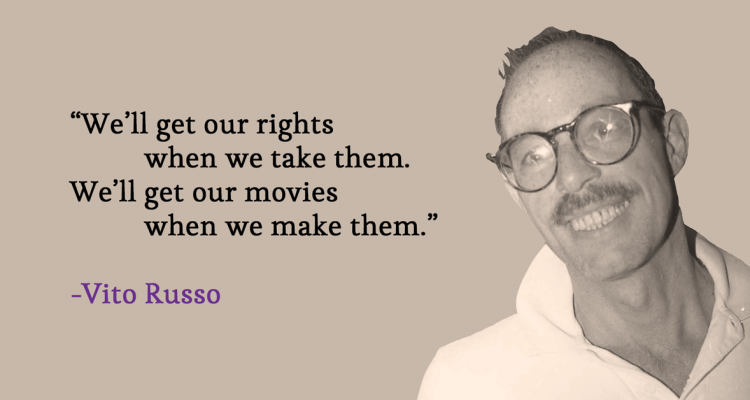

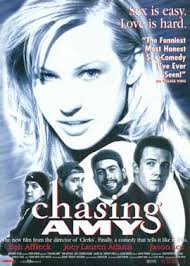
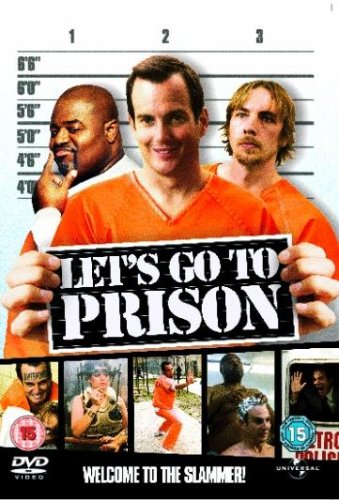
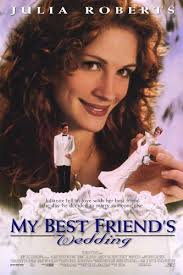
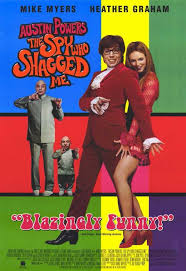
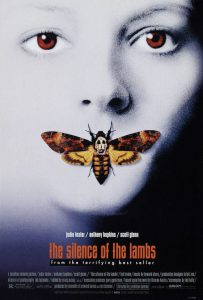
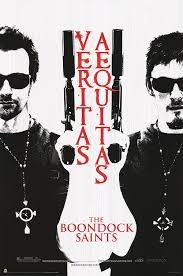
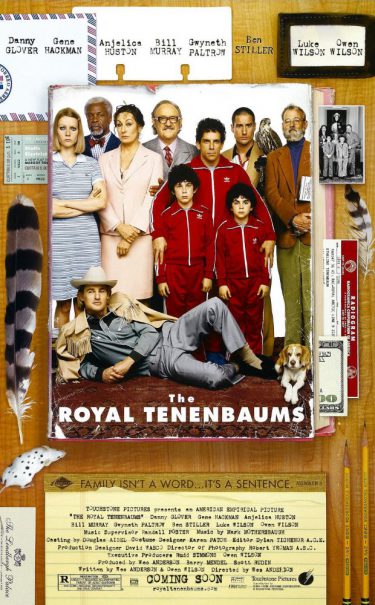
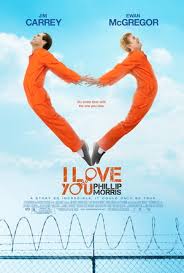
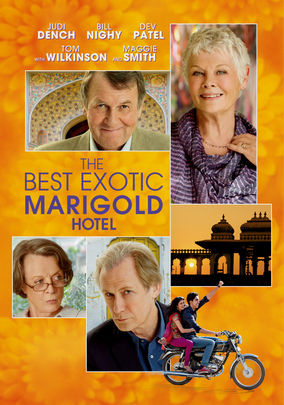
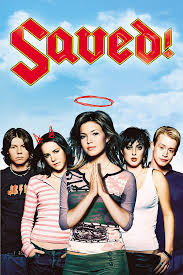
No Comments on "Keep it gay: The Vito Russo test and cinematic representations of the LGBT community"